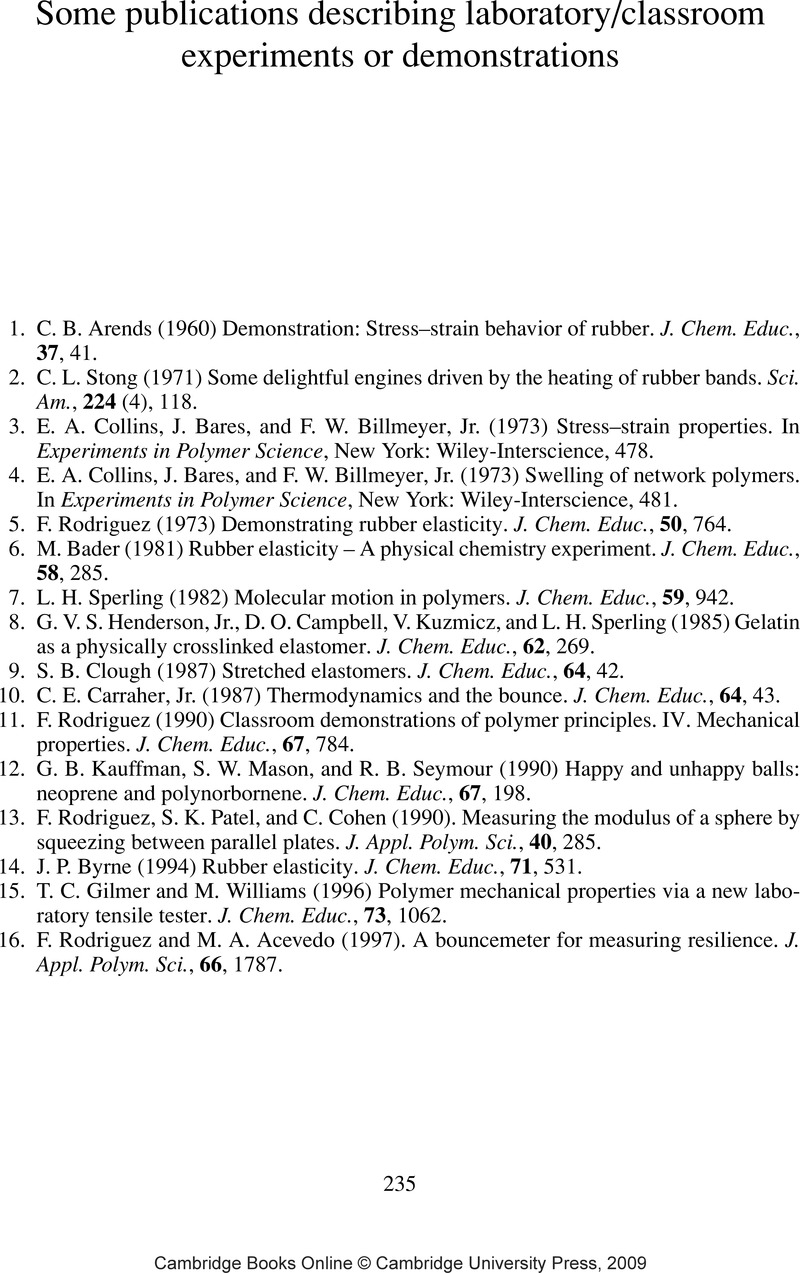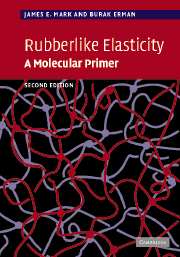Book contents
- Frontmatter
- Contents
- Preface to the first edition
- Preface to the second edition
- Part I Fundamentals
- Part II Additional topics
- Appendix A Relationships between ν, ξ and Mc
- Appendix B Relationships between 〈r2〉, 〈(Δr)2〉, 〈r2〉0, and ϕ
- Appendix C Equations of state for miscellaneous deformations from the constrained junction theory
- Appendix D Thermodynamics of the relationship of stress to temperature
- Problems
- Answers to problems
- Some publications describing laboratory/classroom experiments or demonstrations
- References
- Index
- References
Some publications describing laboratory/classroom experiments or demonstrations
Published online by Cambridge University Press: 04 December 2009
- Frontmatter
- Contents
- Preface to the first edition
- Preface to the second edition
- Part I Fundamentals
- Part II Additional topics
- Appendix A Relationships between ν, ξ and Mc
- Appendix B Relationships between 〈r2〉, 〈(Δr)2〉, 〈r2〉0, and ϕ
- Appendix C Equations of state for miscellaneous deformations from the constrained junction theory
- Appendix D Thermodynamics of the relationship of stress to temperature
- Problems
- Answers to problems
- Some publications describing laboratory/classroom experiments or demonstrations
- References
- Index
- References
Summary

- Type
- Chapter
- Information
- Rubberlike ElasticityA Molecular Primer, pp. 235 - 236Publisher: Cambridge University PressPrint publication year: 2007



